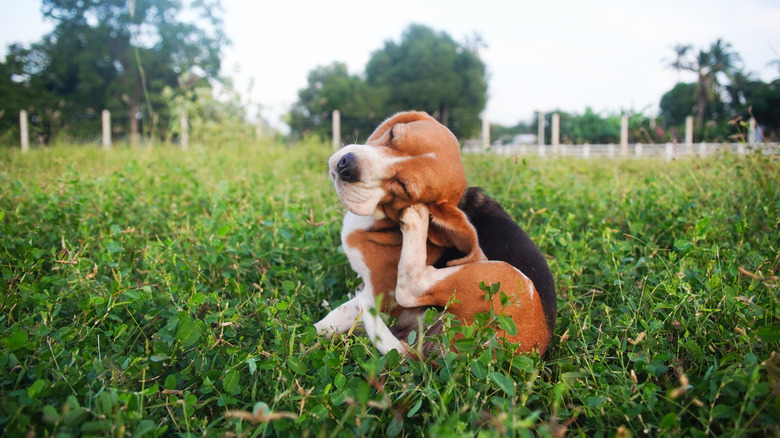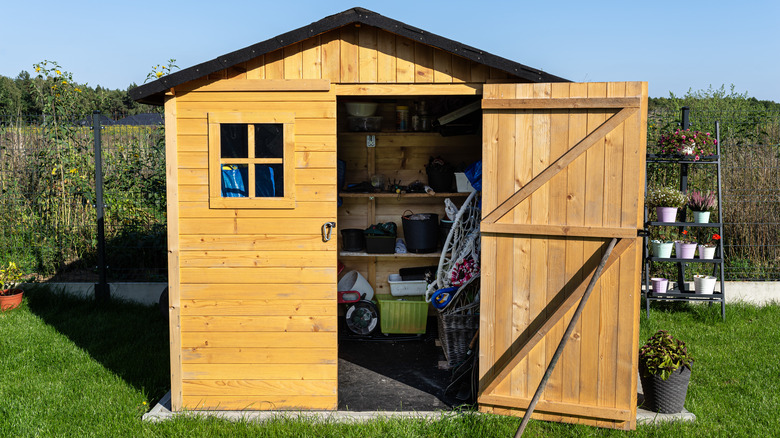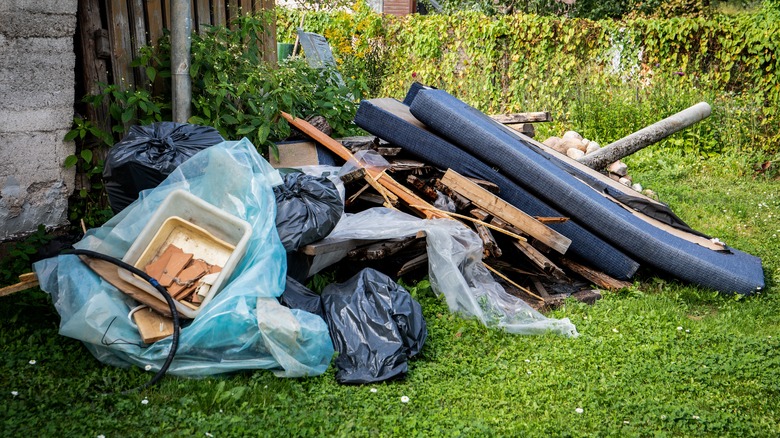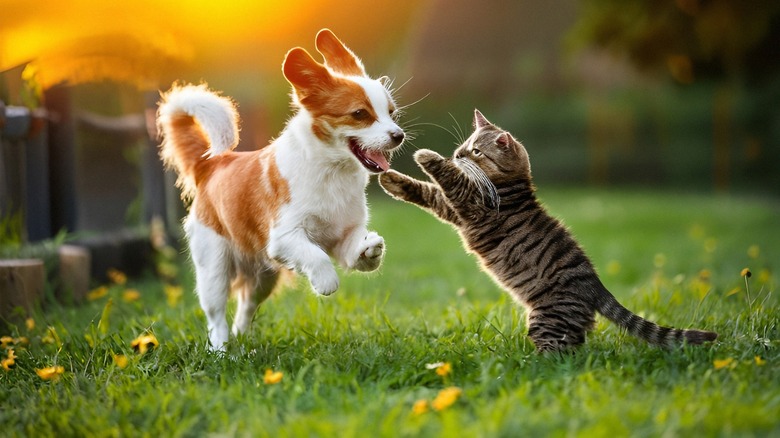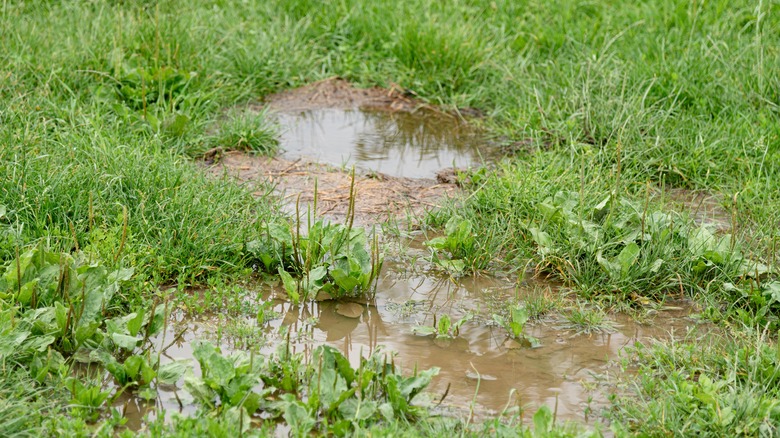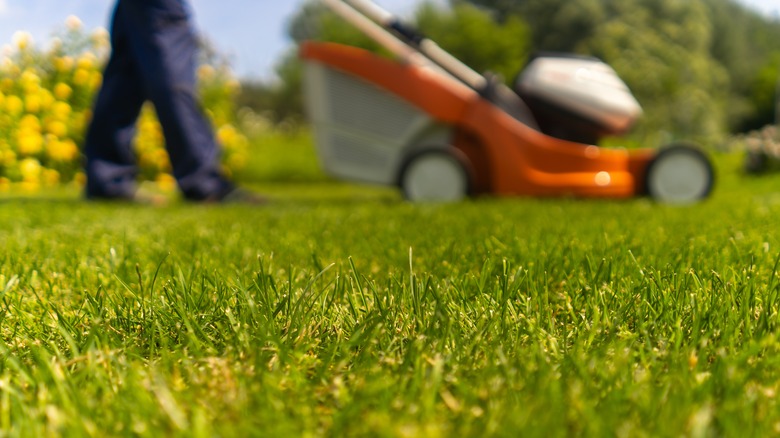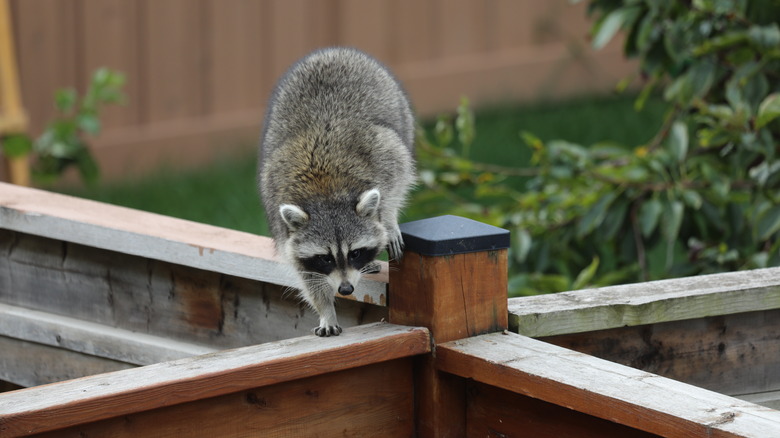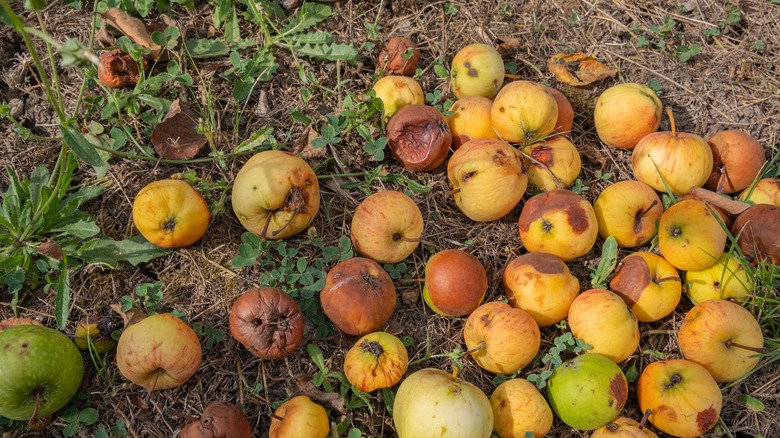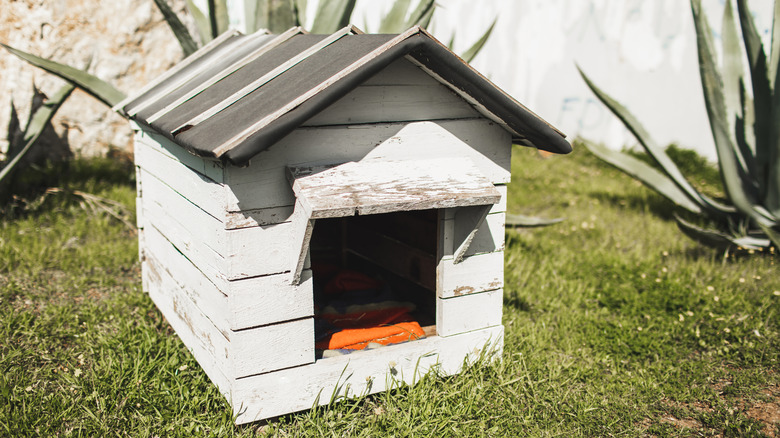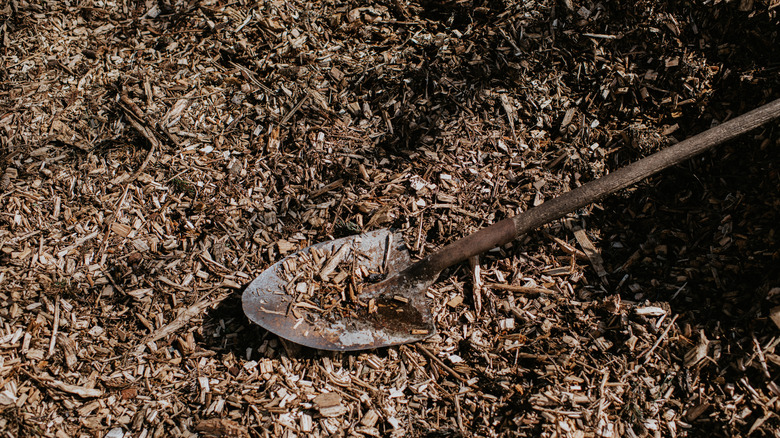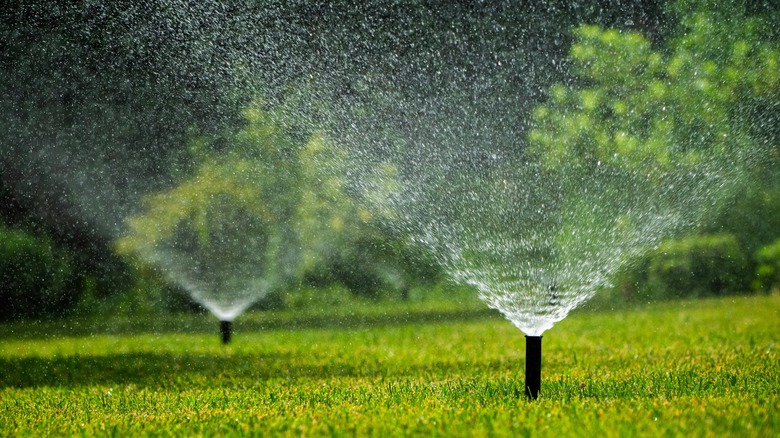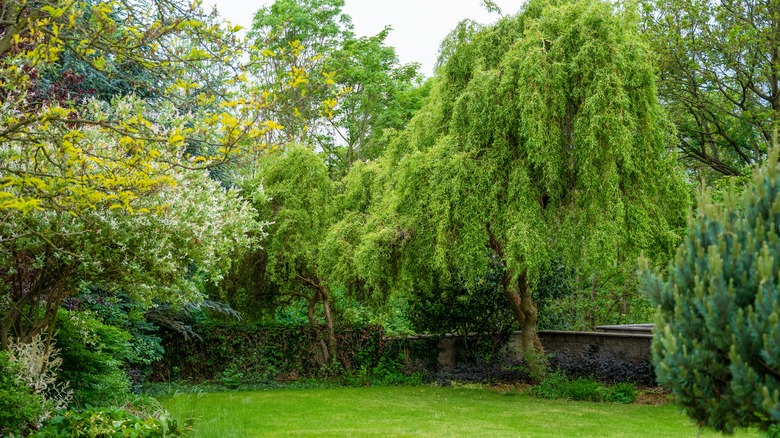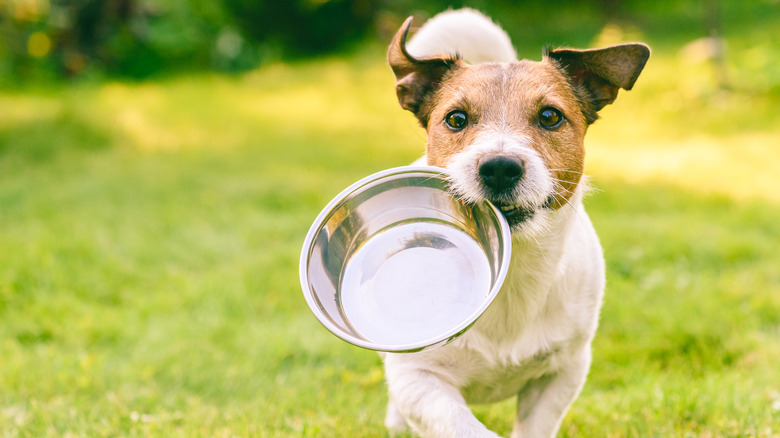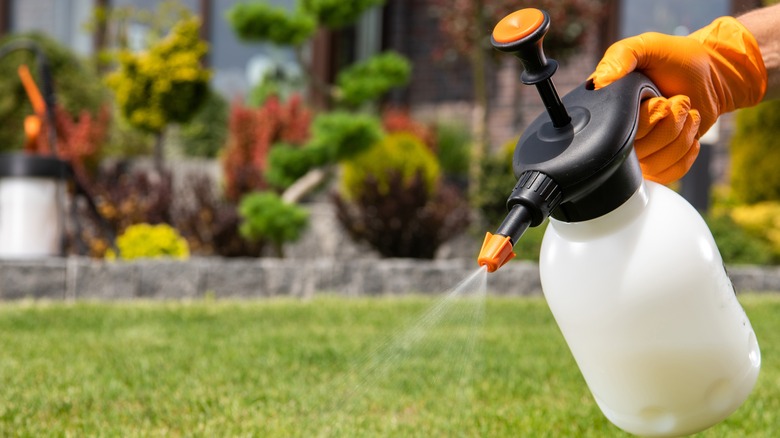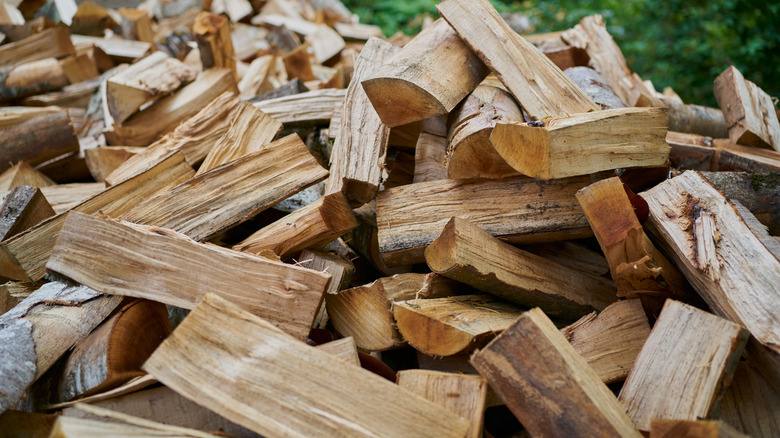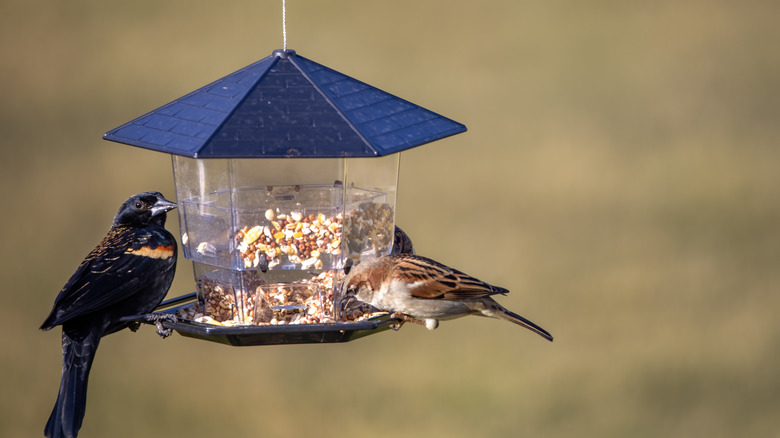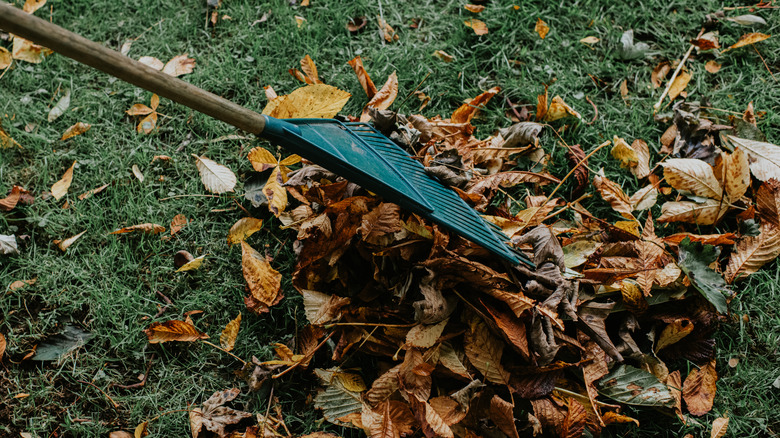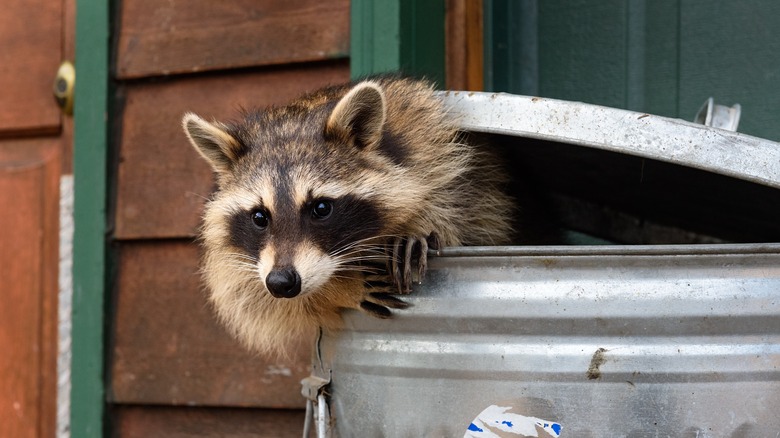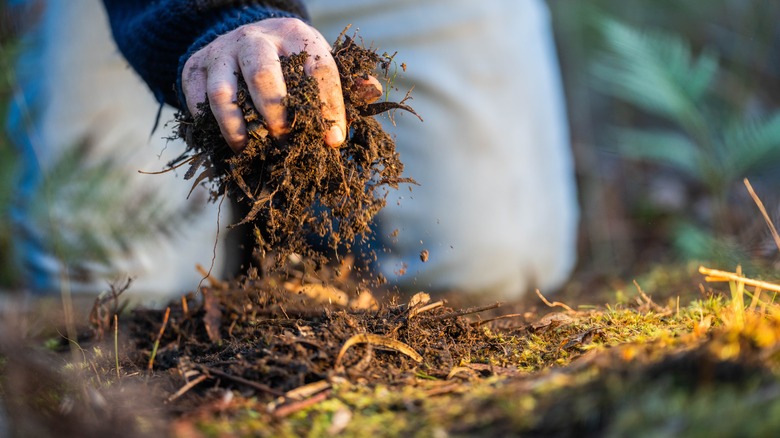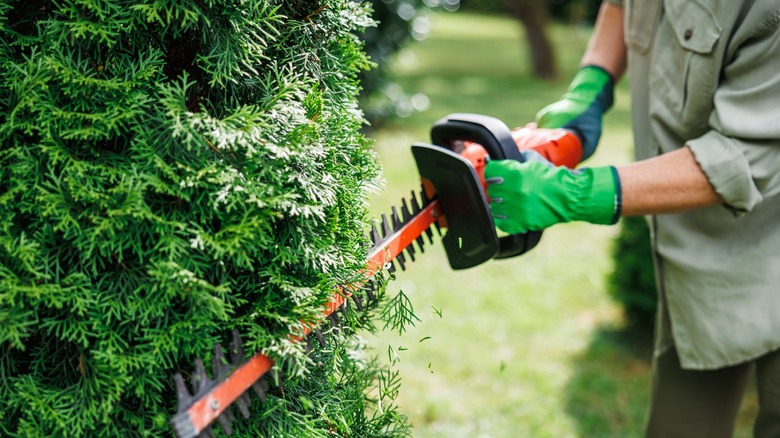19 Ways You're Attracting Unwanted Fleas To Your Yard
We may receive a commission on purchases made from links.
Fleas, like most creatures, want three things – water, food, and shelter. Unless you're vigilant, your yard may be offering all three needs, therefore enticing them to come and make themselves at home. Whether it's not having a tidy lawn, overwatering the yard, or simply forgetting to apply flea medicine on your pet, there are multiple ways you could be attracting unwanted fleas to your yard. The cause could be hidden in the woodpile, under your bushes, or even in your dog house. Luckily, making some simple adjustments to your yard can help mitigate the problem.
The flea life cycle is fast, and they reproduce rapidly. Just 10 female fleas can quickly grow into a quarter of a million fleas within only 30 days. This is because a female can lay up to 50 eggs per day. What's more, in ideal conditions, with days of humidity between 50% and 95%, they can flourish in huge populations in your yard. Like ticks, fleas can carry diseases, passing them on to both animal and human hosts through a bite. These diseases include plague, bartonella, and murine typhus, which can cause serious to severe symptoms in humans, including intense fever, chills, and nausea. Not every bite may lead to illness, but even if you don't get sick, the insects can make their way into your home and become a major problem. Not only do they cause itching and scratching, but they also infest linens, carpets, and furniture. If you want to prevent fleas from coming to your yard, pay attention to features and activities that might be attracting them.
You have shaded structures in your lawn
Fleas look for shelter in your yard, and they may often congregate under any shaded structure, such as a shed, deck, or gazebo, to find it. These options provide the cool, shady conditions they crave. You don't have to get rid of the building altogether, just ensure you manage any standing water near it and keep the nearby grass neatly trimmed. Doing this can make the environment less hospitable and attractive for fleas.
There's an accumulation of yard debris
A messy yard full of debris is a haven for fleas because it offers all of the shaded and humid areas they crave. If you have twigs, leaves, stones, or anything else that can provide them cover, you might have fleas. Each time you mow, bag up your grass clippings and collect all other forms of yard debris so you don't provide a potential cover for these pests.
Your pets are outside a lot
If you let a cat or dog regularly go outside in your yard, you're increasing the chances of attracting fleas. Fleas look for a host, and your pet is the perfect target for them to hitch a ride. Obviously, it may be hard to avoid taking your dog outside, but you can ensure your furry friend has received a flea treatment to protect them. These pesticides will either repel the insects or attack their nervous system, but always ensure to pick the right treatment for your pets and follow the instructions closely.
There's standing water in your yard
An inadvertent way you're attracting unwanted fleas to your yard is by allowing standing water in your lawn. While the fleas aren't necessarily seeking out water to drink, wild animals and strays may be. When they come to your yard for a drink, they might bring along some fleas. Remove the standing water from your yard by either aerating your lawn or adding a drainage system. You'll also help reduce the chances of mosquitoes breeding near your home.
You're not mowing your lawn
Is your lawn a little high? Fleas love taller blades of grass, finding it perfect to hide in your lawn. Lawn experts typically recommend cutting the grass to the appropriate height for your grass type, but keeping it above 2 inches high. This is to make it easier for flea predators, such as spiders, to thrive.
Rodents and urban wildlife are frequent visitors
Deer, rats, raccoons, rabbits, mice, and other critters that can invade your yard often bring fleas with them. Fleas use these animals as hosts, burrowing into their fur and then detaching once they find a new host or a new place to settle in your yard. You can take steps toward deterring the animals with fences or other preventive measures.
You leave discarded food on the ground
The same animals that can bring in fleas might find your yard worth visiting if you frequently have food scraps, fallen fruit, or bird seed available outside. Feeding the wildlife means you're also feeding the fleas that feed on them. Keep your yard free of any rotten fruit and other discarded meals to avoid this. Doing so not only keeps your yard less attractive to flea hosts but will also make it less likely that you will welcome other pests.
Your pet's home needs cleaning
When pets' beds are outside, it can be a hot zone for flea activity. Fleas may burrow in the fabrics after detaching from your pet, and spread throughout other shaded spots in the yard. If you have an outside cushion or pillow your pet commonly rests on, wash it regularly with hot water and let it dry in the sun to kill any fleas that may have found a home there.
You have wood mulch in your yard
Wood mulch is an excellent flea hotel, and you might already have a colony of fleas thriving underneath the mulch in your yard. You don't have to stop mulching altogether, just switch to a cedar option. Fleas avoid cedar, so using this natural repellent can help keep them away. You can go further and create a cedar chip barrier near shaded structures they might live near, such as patios, decks, and playsets.
You're overwatering your lawn
If your lawn is saturated, it can attract moisture-loving fleas. Look for signs of overwatering, such as squishy grass or pooling water. Keep your watering to an inch a week, if possible, making adjustments for any precipitation. Ideally, you should water in the morning to let the grass slowly dry throughout the day.
Deciduous trees are in your yard
Trees can be a lovely accent to your landscaping, yet that beauty might come with a downside if they're deciduous. These types of trees typically have extensive leaf litter, large canopies, and plenty of shade, providing the kind of home fleas need. They can also hold moisture well, which can encourage these insects to stick around. Trim your tree's canopy to let sunshine in underneath and rake shed leaves often. These flea-busting methods also work with ticks attracted by these trees.
Your pet's feeding station stays outside
Feeding your pet outside isn't always a good idea if you want to avoid fleas. Your pet may eat the food, but rodents and wildlife with fleas can take a nibble as well. If you insist on feeding your pet outside, stay outside until they finish their meal. Wash the bowl to remove the food's scent and deter pests who might stop by for a bite. If you store your pet's food outside, always use an air-tight container to guard against critters opening it.
You aren't treating the yard for fleas
You might as well have a welcome mat out for fleas if you don't treat your outdoor space for them, especially if you live near a wooded area or have frequent wildlife visits. Your yard could harbor fleas, and you might not even know, which is why treatment is so vital. Fleas can multiply very quickly, and once you see them, you might already have a full-blown infestation. Using treatments like PetArmor Home Yard Spray will help protect your yard, your pets, and yourself against the would-be invaders.
You have a messy, wet wood pile
One of the most common areas to find fleas after they've arrived courtesy of their animal Uber is in a woodpile. Stacks of wood give them the shaded, cool environment they seek. This is true especially if it's a pile of wood in an untidy heap, because it offers them more cover than a neatly-stacked pile. If you must keep a woodpile, try stacking it off the ground, such as on a concrete block. You should also ensure it's dry and stored at least 20 feet away from your home.
Your feeders attract a diverse selection of birds
If you regularly try to attract a diverse range of birds to your yard, you might end up with a few fleas along for the ride. For instance, sparrows are birds available in large numbers, and this means they may carry fleas on their bodies as well as in their nests. Fleas can be attracted to popular bird spots, like bird feeders and birdbaths, so clean these areas regularly to avoid them nesting in your yard.
You don't rake up dead leaves under the bushes
If you have piles of leaf litter under various bushes in your yard, you've just given fleas more cover to hide. Sweep under your bushes regularly to remove the leaf piles and destroy the attractant, reducing the chances they make themselves at home again. Do the same for any lingering piles of leaves in your yard, then add them to the compost pile to break down naturally.
Your garbage cans are dirty
Raccoons, rodents, and other animals that commonly carry fleas can be attracted to garbage cans, especially if they're untidy or have a loose-fitting lid. If your garbage cans are enticing to these pests, then fleas may come into your yard this way. Keep an eye on the condition of your trash cans and seal them firmly.
Your compost pile is soggy and/or unturned
Composting is great for your garden and sustainability, but it can also welcome fleas. The compost bin offers shade and moisture, plus plenty of organic matter for food. If you don't turn the pile regularly, you make it easier for fleas to creep into your yard. You should also make sure the compost isn't drenched or soggy to minimize the chances they're present. After a rainy day or two, add more brown material to help with the excess moisture.
You have untrimmed bushes and plants in the yard
Overgrown or untrimmed plants are an ideal home for fleas, especially if the leaves or branches give them adequate cover. If you have an unkept yard or garden, chances are, you might have fleas. Keep up with your bush and plant care, trimming any dead leaves or branches as needed to let in the sunshine. You can also try adding strong-scented flea-repelling plants to naturally repel the pests (and ticks), such as catnip, lemon balm, and lavender.
